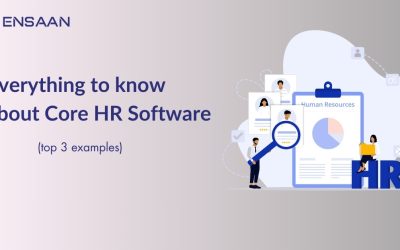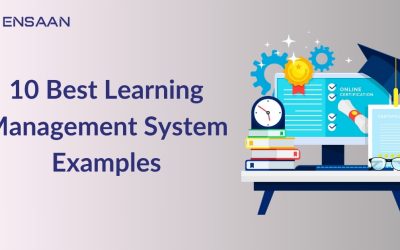The recruitment process is a methodical approach that organizations use to identify, attract, interview, and choose the best candidates for open positions.
There are several processes from determining the job function to accepting an offer from a candidate.
Hiring practices that are well-executed ensure that the organization chooses candidates that complement its culture, skills, and knowledge.
This comprehensive handbook will lead you through each of the seven main hiring process steps, providing guidance on best practices as you go.
Table of contents
Step by Step Process for Hiring
1. Determining Needs and Performing a Work Analysis:
The hiring process starts with identifying the company’s particular needs.
This comprises analyzing the job and determining the necessary skills for the role.
Important Actions to Take:
Analyze the job to determine the responsibilities, required education, training, and experience.
The department that needs the new hire is usually consulted during this process.
Job description and requirements: In a job description, outline the duties, obligations, and expectations of the role in clear and concise terms.
Good job descriptions attract the right candidates.
2. Identifying Candidates:
The next step after establishing the job requirements is to find qualified candidates.
Employers use this to find applicants who meet the requirements and fit the job description.
Key Sources of Information: Job boards and career websites It can help attract a lot more applications to post the position on popular websites such as Indeed, Glassdoor, or LinkedIn.
Employee Suggestions: Motivate employees to tell their network members about qualified candidates. This often results in good hires.
Social media and networking: Actively looking for candidates on websites such as LinkedIn can yield great results for specialized or challenging-to-fill positions.
3. Screening and Shortlisting Candidates:
Examining and selecting candidates based on their qualifications and previous job experience comes next after applications are received.
Here, the goal is to narrow the candidate pool to the most qualified individuals.
Key screening strategies include reviewing resumes and assessing candidates based on their education, work history, and skills relevant to the role.
Screening by Phone or Video: Conduct quick phone or video interviews to get a sense of a candidate’s personality, communication skills, and suitability for the role.
ATS Software is frequently used by organizations to weed out applicants that don’t fit the mold through Applicant Monitoring Programs (AMP).
4. Performing Interviews:
The interview stage allows hiring managers to evaluate a candidate’s qualifications, personality, and compatibility with the company culture.
This is one of the most crucial hiring process procedures.
Essential Interview Types:
Interviews conducted one-on-one: This is the traditional method where the candidate talks with the hiring manager or HR representative.
Panel interviews: These involve multiple interviewers and are helpful in obtaining a variety of perspectives regarding the candidate.
In behavioral interviews, candidates are asked scenario-based questions to assess their past behavior and gain a sense of how they could react going forward.
Guidance:
Organize your questions into a sequence.
Both technical and soft skills should be assessed.
Provide a brief overview of the company’s requirements and culture throughout the interview process.
5. Evaluation and Selection of Applicants:
After interviews, it is time to evaluate the prospects and make the next decision.
Examining each interviewer’s remarks and comparing candidates based on various standards are part of this process.
Essential Criteria for Evaluation:
Skills and Experience: Does the candidate possess the training and experience needed for the position?
Would the candidate fit in with the company’s beliefs, culture, and team members?
Prior Experience: Does the candidate have a track record of accomplishment in positions similar to this one?
The top applicants are selected to proceed after evaluation.
6. References and Background Checks:
Verifying the candidate’s information and ensuring that their background meets the company’s needs is essential before making an offer.
Important Actions to Take:
Verification of References: Ask former employers or coworkers about the candidate’s dependability and past performance.
history investigations: Check for any further compliance needs in line with company policy, confirm educational qualifications, and do criminal history checks.
By carrying out these procedures, the business may lower risks and ensure that it selects qualified candidates.
7. Extending the Employment Offer:
Offering the chosen applicant a job is the last phase in the hiring process.
Pay, perks, and other relevant information should all be clearly and succinctly stated in this offer together with the terms and conditions of employment.
Crucial Components of an Offer of Employment:
Restitution: Be sure to include the hourly wage or remuneration, along with any potential incentives or bonuses.
Benefits: Provide an inventory of any paid time off, health insurance, and retirement plans that are accessible to staff members.
Start Date: State the expected start date of the candidate’s work.
Depending on the position, employment contracts or non-disclosure agreements (NDAs) may also be included in the job offer.
Accepting the offer and starting the onboarding process marks the conclusion of the hiring cycle.
Conclusion
A systematic, multi-step process, the recruitment process ensures that companies choose and hire the most qualified candidates for available vacancies.
By following these seven processes, organizations can improve the quality of their hiring and speed up the process of integrating new talent into their workforce: job analysis, sourcing, screening, interviewing, evaluating, conducting background checks, and making the offer.
An effective hiring procedure is essential for every business that wishes to thrive.
In addition to reducing hiring time, this may improve employee retention and ensure that the right people are in the right positions.

















